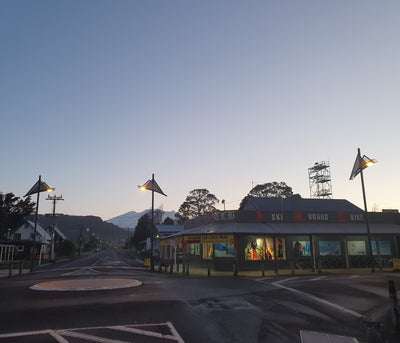

Step back in time by exploring the Mangapurua Valley in Whanganui National Park as you cycle along the Mangapurua Track and finish the day with a jet boat ride along the Whanganui River!
Take a day to ride through the Whanganui National Park as you explore the historic Mangapurua track that winds through ancient native forest to the iconic Bridge to Nowhere. After cycling an epic 36km of grade 3 mountain bike trail, enjoy an incredible 30km jet boat ride from the Mangapurua Landing to Pipiriki.
Quick Facts about cycling Mangapurua + Bridge to Nowhere
Grade 3 MTB Trail in remote backcountry environment.
- The Mangapurua Track is a Grade 3 trail located in a remote backcountry area of Whanganui National Park.
- This track is best ridden in dry conditions. This track can become more challenging (similar as a Grade 4 trail) to ride during or after wet weather due to the large areas of slippery papa clay surface.
- Suitable for experienced intermediate riders.
- Unsure if this is the right trail for you? Talk to us! We're happy to talk more about cycling the Mangapurua Track.
Trail Distance & Ride Timeframe
- The trail has a distance of 36km from the start of the track in Ruatiti through to the Mangapurua Landing - location you meet the jet boat. The jet boat will bring you to Pipiriki.
- The trail can take between 4 to 7 hours to complete. Timeframe varies based on rider's ability levels and speed you're moving.
- Please allow extra time if you're riding the trail in wet conditions.
Jet Boat from Mangapurua Landing to Pipiriki or Bridge to Nowhere Lodge
- After cycling the 36km of trail, enjoy the scenic 30km jet boat ride down the Whanganui River!
- The jet boat picks you and your bike up from Mangapurua Landing and brings you to Pipiriki.
- Approx. 45min jet boat ride.
- Jet boat pick ups must be organized and booked in advance before your planned ride day.
- If you've booked to stay at Bridge to Nowhere Lodge, the jet boat will drop you off at the lodge along the Whanganui River.
Wet Weather & Winter Closures
- The Mangapurua Track is closed during winter months.
- The track can be closed on short notice due to severe weather conditions.
- Following periods of heavy rain, please check trail conditions on DOC and Mountains to Sea website for the most up to date track information.
- The Papa clay along the track becomes very slippery and sticky in wet conditions, be prepared to remove any clay that may build up along your drivetrain and brakes etc.
- Always check the weather forecast and plan in advance.
Shuttles & Jet Boat Bookings for Mangapurua + Bridge to Nowhere
- TCB can organize your shuttle and jet boat bookings.
- Shuttles are available from TCB/Ohakune in the morning to the start of the track in Ruatiti and pick up from Pipiriki back to TCB/Ohakune at the end of the day.
- Shuttle and Jet boat packages are available and the most popular option for riders.
- Shuttles & jet boat must be booked in advance.
- Discounted group rates are available for bookings of 10+ riders.
- Contact us to make your shuttle and jet boat booking!
TCB Mountain Bike Hire for Mangapurua + Bridge to Nowhere
Need to hire a mountain bike for your ride along Mangapurua and Bridge to Nowhere? We can help you out! We have a massive fleet of mountain bikes for hire in a range of frame sizes.
Our hire fleet has Electric Full Suspension Mountain Bikes, Full Suspension Mountain Bikes and Front Suspension Mountain Bikes.
For cycling the Mangapurua and Bridge to Nowhere, we encourage and recommend riders to hire either an Electric Full Suspension MTB or Full Suspension MTB.
Book your MTB hire online today by clicking here, alternatively contact us by phone or email to reserve your mountain bike hire.
What is Papa Rock?
Papa rock is a soft mudstone that is found in many places along the Mangapurua Track and bluffs. It has a distinctive blue-grey colour and when wet the Papa rock/clay surface becomes very slippery and sticky.
If you're riding the Mangapurua Track in wet conditions - whether it's during rain or after recent wet weather, it is important to ride with caution and be aware of the slippery papa rock surface sections of the track. This fine, sticky mud can easily build up and stick to a bikes drivetrain and brakes. If this occurs then try to carefully remove the mud build up.
Visit M2SNZ's website to learn more about the Papa Rock that is found along the Mangapurua Track.
Mountains to Sea - Ngā Ara Tūhono
The Mangapurua Track and Bridge to Nowhere is part of the Mountains to Sea - Ngā Ara Tūhono network of trails.
To learn more about Mountains to Sea - Ngā Ara Tūhono and the trail network, including up to date trail conditions, please visit the official website.



